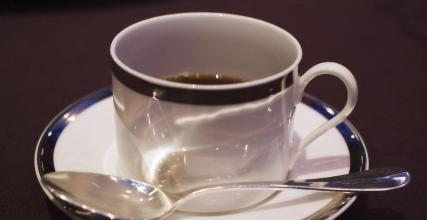San Cristobal Hassenda Coffee Garden Arabic Bourbon Coffee Tree
St. Cristobal is a larger island in the Galapagos Islands (Galapagos Islands) and the only one in the archipelago with plenty of fresh water. At an altitude of 410m, there is a small lake called El.Junco, which forms streams along the rocks and volcanic rocks on the southern slope of the island, and mineral-rich fresh water moistens the land of St. Cristobal, keeping the soil moist and fertile. The local microclimate caused by the Humboldt current (HumboldtCurrent), strong equatorial sunlight and sharp temperature changes (43 degrees at sea level and 10-16 degrees above sea level at 275m) provide unique advantages.
Features of Galapagos Islands Coffee:
The coffee produced in the Galapagos Islands (Galapagos Islands) is a treasure of coffee. It is of excellent quality and is grown without any chemicals.
Flavor: rich in taste, sweet in sour
Suggested baking method: medium baking
★★★: excellent
Galapagos Islands Coffee Market:
Because of the unique role of the Galapagos Islands in the course of history, the Government of Ecuador has designated the Galapagos Islands as a national park, the land is no longer allowed to be reclaimed as new agricultural land, and the introduction and use of fertilizers, pesticides, herbicides and other chemicals are strictly prohibited, so the Galapagos Islands coffee is recognized as a natural product grown in St. Cristobal (SaintCristobal). Arab bourbon coffee trees are planted in the Hasunda Coffee Garden (HaciendaElCafetal) in San Cristobal. The elevation of the plantation is between 140 and 275 meters above sea level, and the climate in this area is equivalent to that between 915 and 1830 meters inland. This gradient is very suitable for the growth of high acidity extra hard coffee beans (SHB), and is also the key to the high quality of coffee.

Important Notice :
前街咖啡 FrontStreet Coffee has moved to new addredd:
FrontStreet Coffee Address: 315,Donghua East Road,GuangZhou
Tel:020 38364473
- Prev

Coffee producing areas in south-central Puerto Rico introduce Grand Larez Yaoke Coffee
Coffee in this country is generally carefully planted, with pure taste, aroma and heavy granules, among which the best is among the world's famous brands. The best coffee is Yaoke Yauco Selecto, which means Selecto. Grand Lares Yauco is produced in the southwest of the island, while Lars coffee is produced in the south-central part of the island. Gourmet coffee from Puerto Rico
- Next

It is adjacent to Mexico's Chabas Chispa: Chiapas Caf é to the north of Guatemala.
Mexico Chabas Chispa: Chiapas is located in the southernmost coffee growing area of Mexico, adjacent to the tiny south producing area north of Guatemala, and both belong to the high quality coffee producing areas. Chabas is also one of the most praised coffee producing areas in Mexico. Chabas coffee has a moderate consistency, mild taste but sweet flavor, with a little banana and dry aroma.
Related
- Does Rose Summer choose Blue, Green or Red? Detailed explanation of Rose Summer Coffee plots and Classification in Panamanian Jade Manor
- What is the difference between the origin, producing area, processing plant, cooperative and manor of coffee beans?
- How fine does the espresso powder fit? how to grind the espresso?
- Sca coffee roasting degree color card coffee roasting degree 8 roasting color values what do you mean?
- The practice of lattes: how to make lattes at home
- Introduction to Indonesian Fine Coffee beans-- Java Coffee producing area of Indonesian Arabica Coffee
- How much will the flavor of light and medium roasted rose summer be expressed? What baking level is rose summer suitable for?
- Introduction to the characteristics of washing, sun-drying or wet-planing coffee commonly used in Mantenin, Indonesia
- Price characteristics of Arabica Coffee Bean Starbucks introduction to Manning Coffee Bean Taste producing area Variety Manor
- What is the authentic Yega flavor? What are the flavor characteristics of the really excellent Yejasuffi coffee beans?

